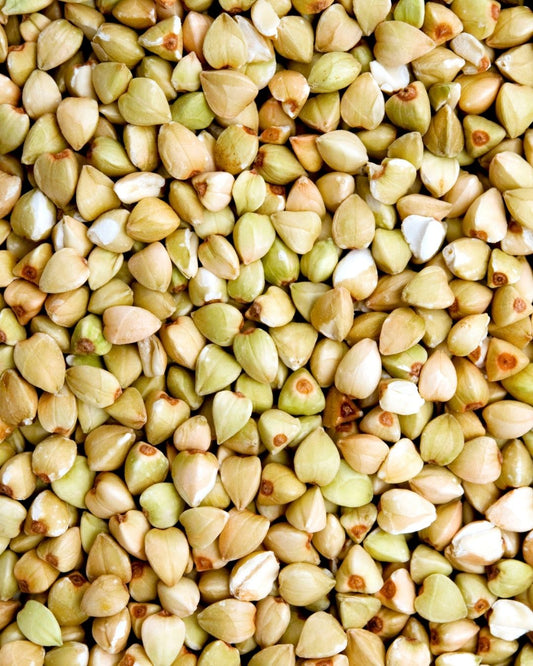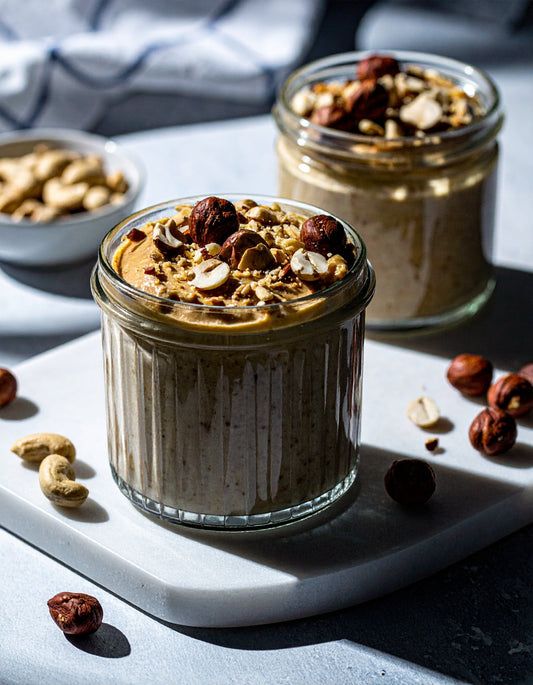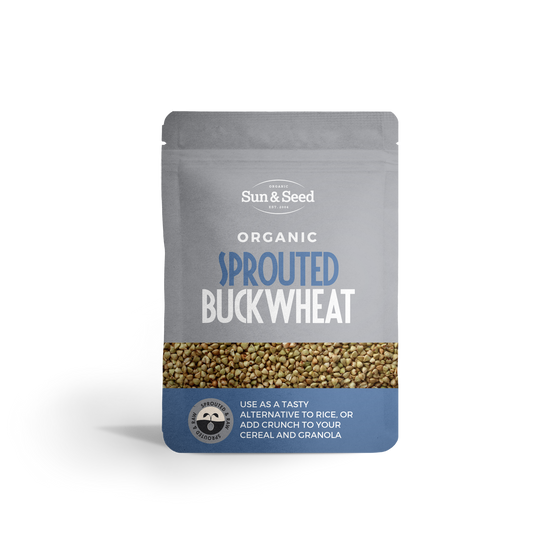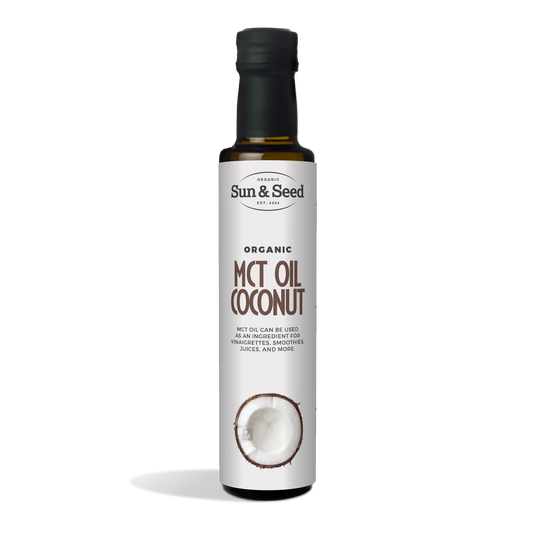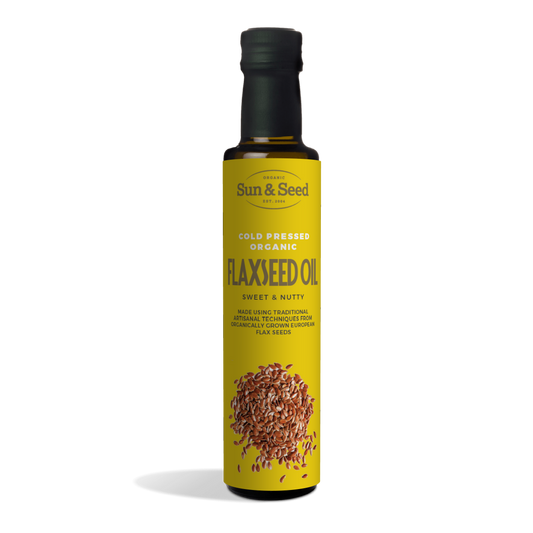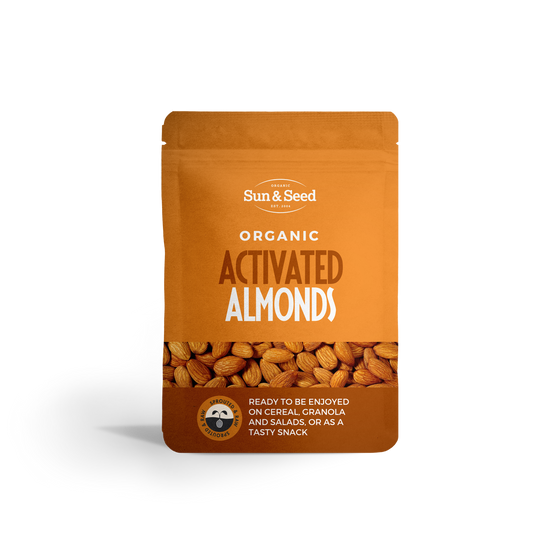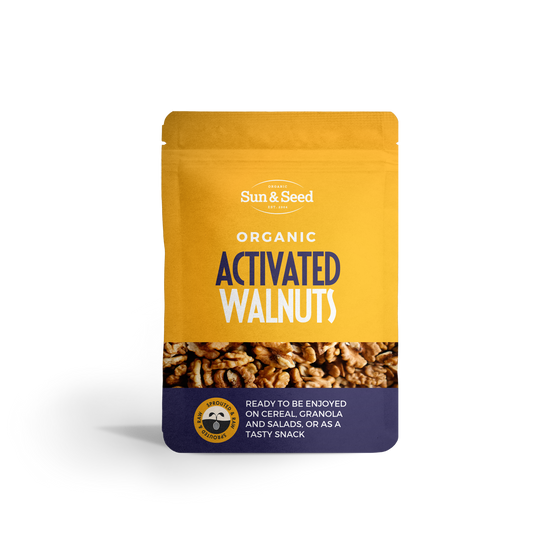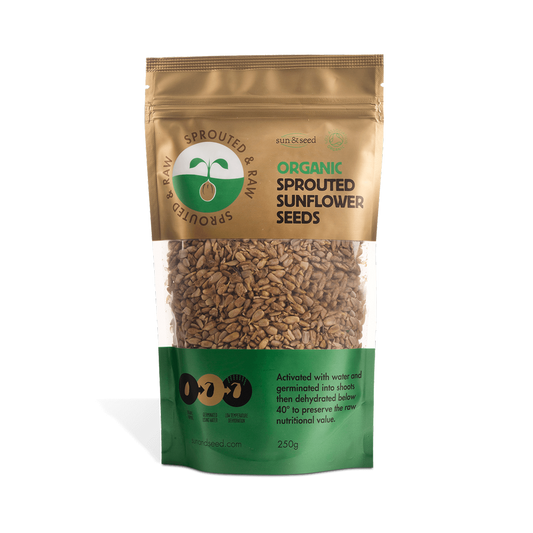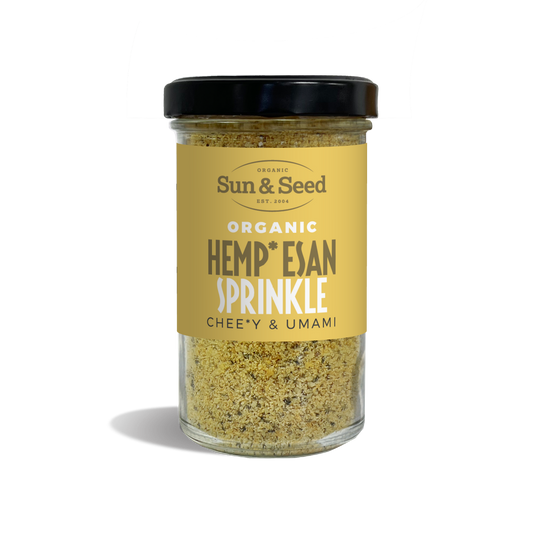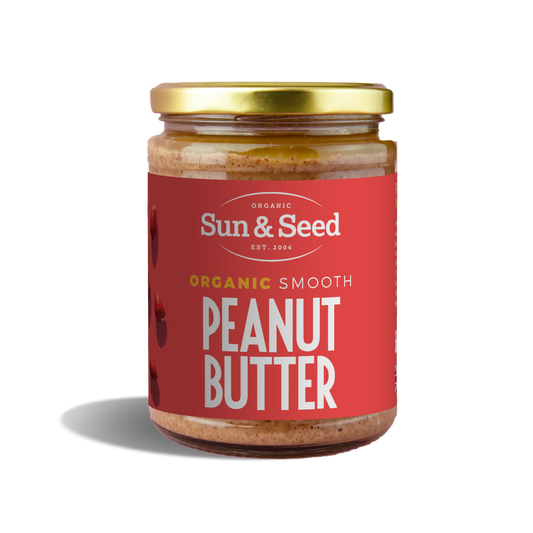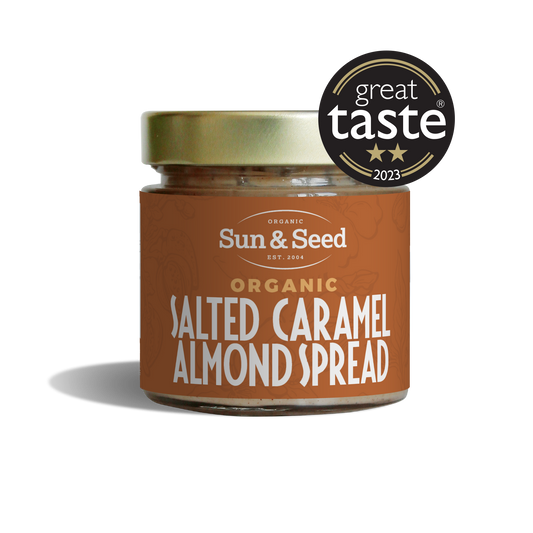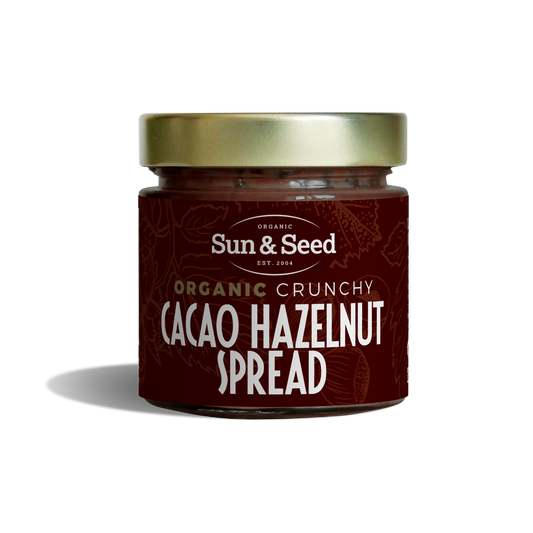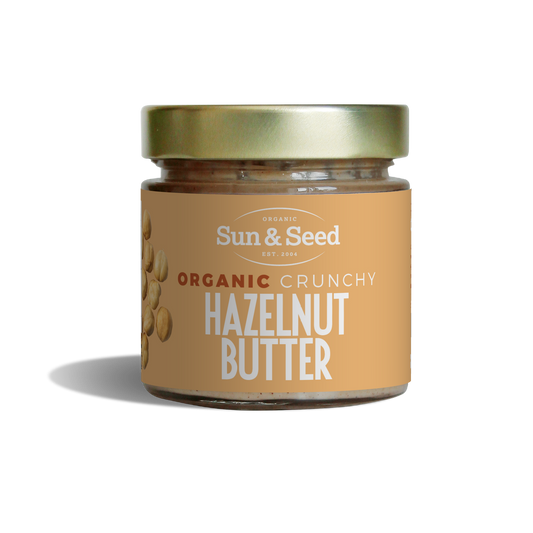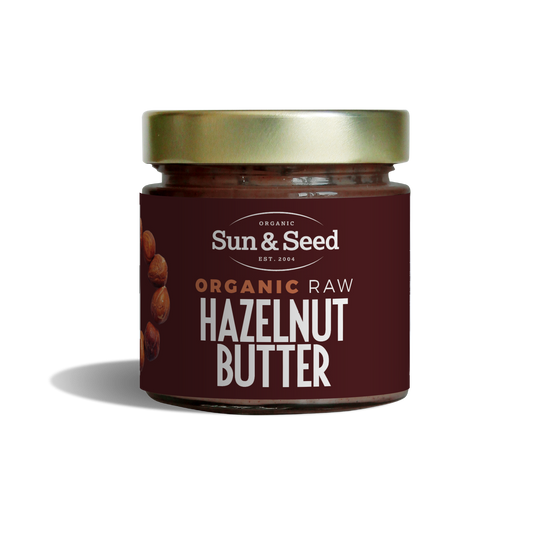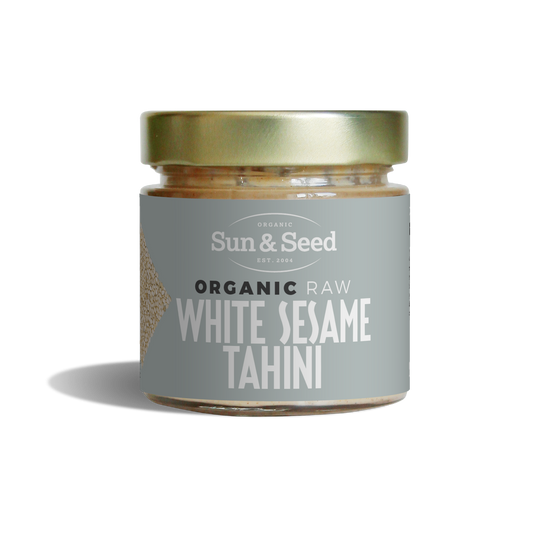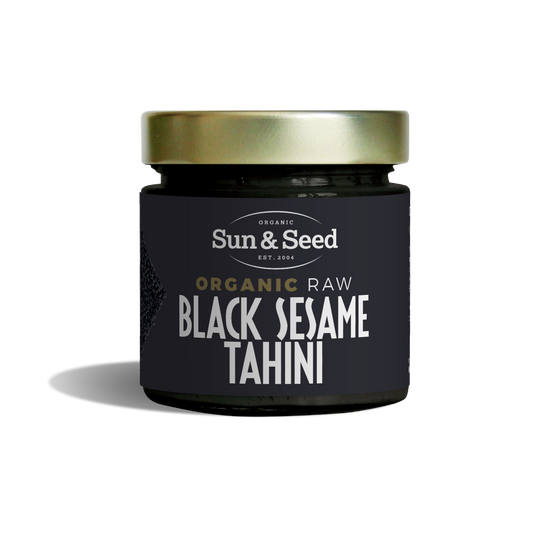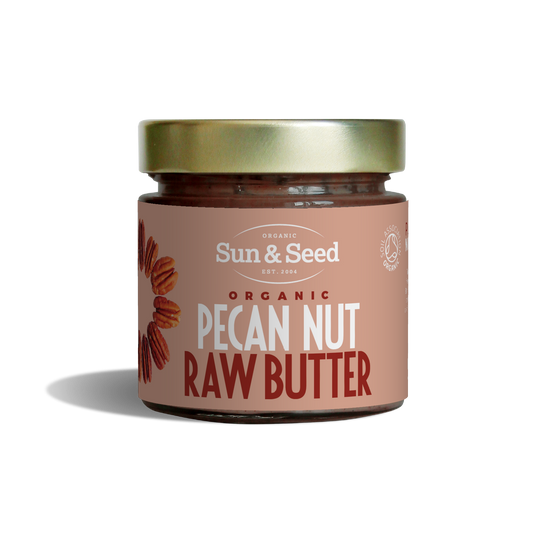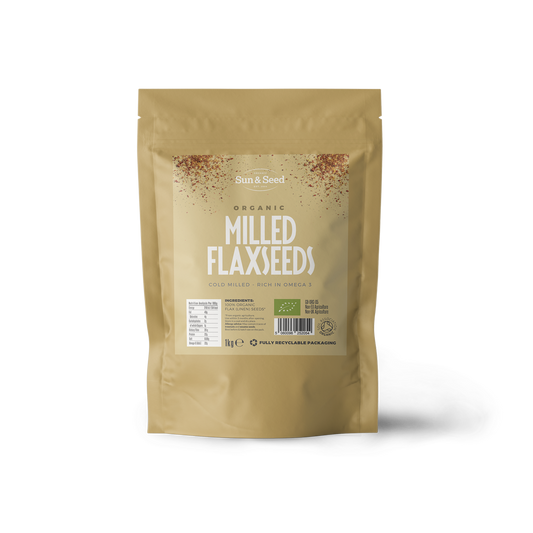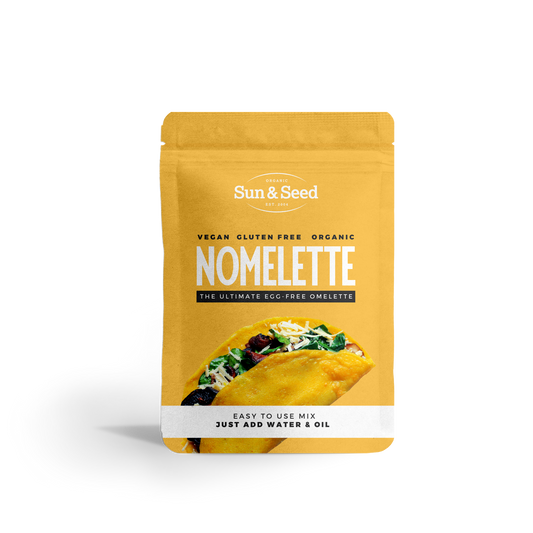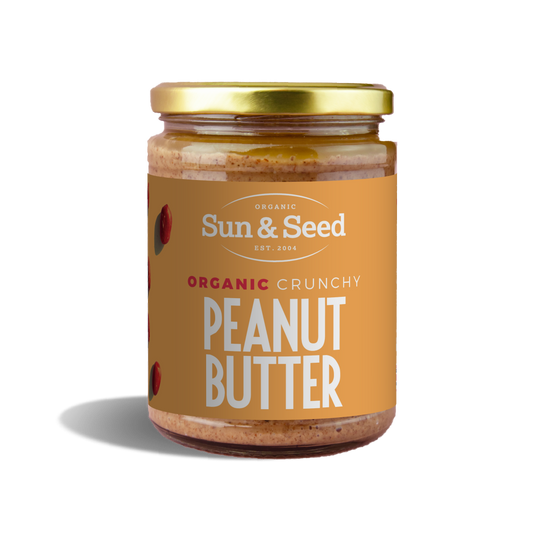 What It Is & Why It’s Special
What It Is & Why It’s Special
Black sesame tahini is made by stone-grinding 100% raw, unhulled black sesame seeds into a smooth, dark paste. Because the seeds remain unhulled, the tahini retains the husk’s minerals and fibre as well as its deep, nutty, slightly bitter flavour. The slow stone-grinding process keeps temperatures low (below 45 °C), preserving the seed’s volatile aromatic oils and heat-sensitive antioxidants.
Compared with white tahini, black sesame tahini has a bolder taste, higher mineral content, and a striking charcoal colour that makes it a favourite among chefs and home cooks for both savoury and sweet dishes.
The Nutrition Behind the Colour
Black sesame seeds differ from white ones mainly in phenolic and pigment compounds—notably anthocyanins and melanin-like substances—that act as antioxidants. They are also an excellent source of:
- Calcium and magnesium – contribute to normal bone and muscle function (EFSA, 2010).
- Iron and zinc – essential for normal cognitive and immune function (EFSA, 2010).
- Sesamin and sesamolin, lignans studied for their antioxidant and lipid-modulating effects (Hirose et al., 2019, Nutrients 11:1709).
- Unsaturated fatty acids (mainly oleic and linoleic), which make up roughly 80 % of sesame oil’s fat profile (FAO/WHO Food Composition Table, 2021).
- Dietary fibre (around 11 g / 100 g), helping maintain digestive regularity (USDA FDC No. 170150).
Regular consumption of sesame products has been associated with improved serum antioxidant status and lipid profiles in intervention trials – for example, in Nutrition Research (2013; 33:414-421) and J. Nutr. Sci. Vitaminol. (2015; 61:1-8) – though effects depend on total diet and quantity consumed.
How It’s Made
- Cleaning and sorting raw, unhulled black sesame seeds.
- Low-temperature grinding between natural stone wheels until a silky paste forms.
- No additives – no salt, no extra oil, no emulsifiers.
Because the seeds are unhulled, the tahini is naturally darker, thicker, and slightly less fluid than white tahini. The husk contributes both extra minerals and a faint bitterness that balances sweet or fatty foods beautifully.
 How to Use It
How to Use It
Black sesame tahini’s depth of flavour works across cuisines – from Japanese sweets to Levantine sauces to contemporary desserts.
Below are verified, real uses and recipe contexts drawn from established cookery sources:
1. Black Sesame Dressing (Goma-aé style)
From traditional Japanese cookery: whisk together black sesame tahini, tamari, rice vinegar, and a touch of maple syrup; toss with blanched spinach or green beans. (Source: Japanese Cooking: A Simple Art, Shizuo Tsuji, Kodansha 2016 ed.)
2. Halva-Inspired Spread
Mix black sesame tahini with honey or date syrup for a natural, mineral-rich spread on sourdough or pancakes. (Referenced in Ottolenghi & Tamal, Sweet, Ebury Press 2017.)
3. Black Sesame Ice Cream or Mousse
A long-standing dessert in East Asia: blend tahini with plant milk, sugar, and vanilla, then churn or set as a mousse. (Common in Japanese and Taiwanese recipes such as Kurogoma Ice Cream, documented in Just One Cookbook 2022.)
4. Baking Accent
Use a spoonful to deepen the flavour and colour of brownies, banana bread, or cookies. (The Guardian Food, April 2021: “Black-sesame banana bread is the new tahini cake.”)
5. Savory Sauces
Blend with lemon juice, garlic, and water for a smoky dressing over roasted aubergine or cauliflower – a twist on the classic Levantine tahini sauce. (Referenced in Ottolenghi Simple, 2018.)
Pro Tips
- Stir before use – natural oils rise to the top.
- Pair boldly: it complements cocoa, coffee, ginger, miso, and citrus.
- For colour contrast, drizzle over light-coloured foods like yogurt, tofu, or white hummus.
- Storage: keep in a cool, dark place; refrigerate after opening to preserve flavour and prevent oil oxidation.
- Don’t heat directly in a pan – add toward the end of cooking or in dressings to maintain nutrients.
Raw black sesame tahini is more than a condiment; it’s a concentrated source of minerals, fibre, and beneficial plant compounds, with a flavour that bridges savoury depth and dessert richness. Whether you swirl it through brownies or spoon it over noodles, you’re tasting the pure essence of the sesame seed — unrefined, unhulled, and naturally powerful.
Key References
- Hirose, N. et al. (2019). “Sesamin and sesamolin in sesame seed and their physiological roles.” Nutrients 11(7): 1709.
- Yoshida, H. et al. (2015). “Effects of sesame lignans on oxidative stress and lipid metabolism in humans.” J. Nutr. Sci. Vitaminol. 61: 1-8.
- USDA FoodData Central, FDC No. 170150 (Sesame Seed, whole, dried).
- FAO/WHO (2021). Regional Food Composition Tables for Western Europe and Mediterranean Foods.
- EFSA Panel on Dietetic Products, Nutrition and Allergies (2010). Scientific Opinion on Dietary Reference Values for minerals.
- Ottolenghi Simple (2018); Tsuji, S. (2016) Japanese Cooking: A Simple Art; The Guardian Food (Apr 2021).



